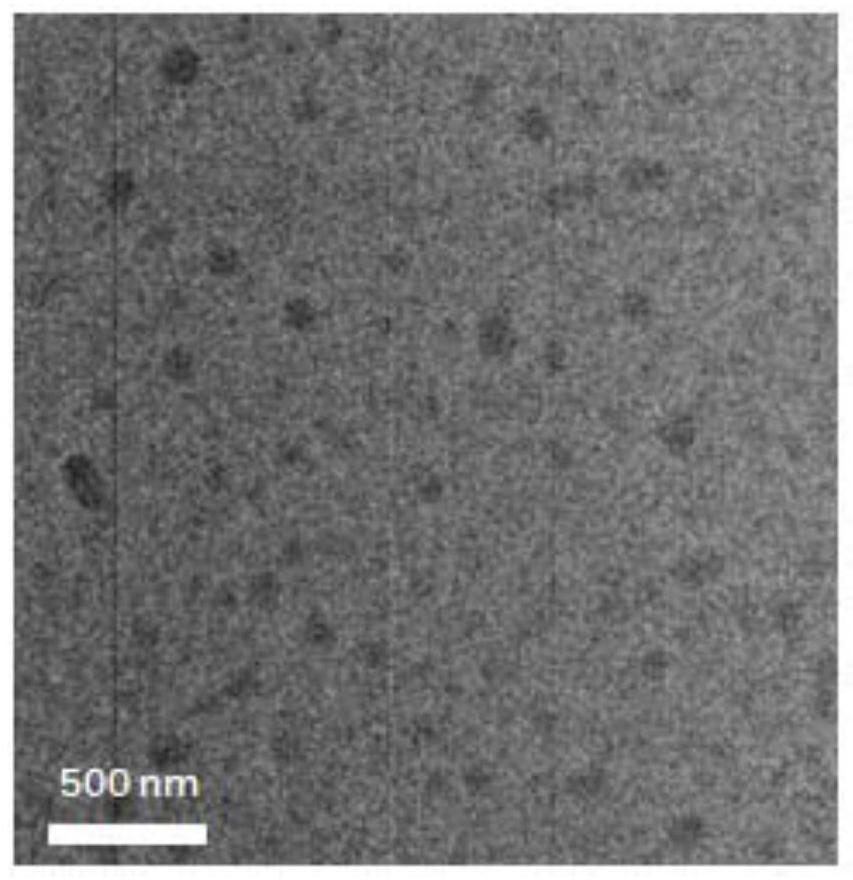Self-assembly material capable of forming nano defense network in situ on tumor as well as preparation method and application of self-assembly material
A self-assembly, in-situ technology, applied in the field of biomedicine, to achieve real-time bioimaging, improve biosafety and bioavailability, good biocompatibility and mechanical properties
- Summary
- Abstract
- Description
- Claims
- Application Information
AI Technical Summary
Problems solved by technology
Method used
Image
Examples
Embodiment 1
[0076] This example constructs a self-assembling material that can form a nano-defense network in situ on a tumor. The self-assembling material is composed of a targeting peptide, a self-assembling polypeptide and a bispyrene fluorescent signal molecule. Its chemical structure is as follows;
[0077]
[0078] (1) Swell Wang resin with N,N-dimethylformamide;
[0079] (2) Using the terminal amino group to obtain Fmoc protection, the amino acid of the side chain amino group to obtain Boc protection and the bispyrene fluorescent signal molecule as raw materials, first, according to the amino acid sequence of Ala-Thr-Trp-Leu-Pro-Pro-Arg, add Arg To the carrier resin, carry out coupling reaction and connection with Wang resin; take off the Fmoc protecting group on Arg, and carry out coupling reaction and connection of the second amino acid Pro with Arg; until the completion of Ala-Thr-Trp-Leu-Pro- Condensation of all amino acids in Pro-Arg;
[0080] (3) Remove the Fmoc protectin...
Embodiment 2
[0085] This embodiment prepares self-assembled nanoparticle solution and nanofiber dispersion, the specific method is as follows:
[0086] The self-assembled material that embodiment 1 is made is dissolved in DMSO solvent (the concentration of self-assembled material is 1.5 * 10 -3 M), take the above solution and place it in a centrifuge tube, then slowly add deionized water into the centrifuge tube to prepare mixed solutions with different water contents (0%, 40%, 98%), and mix the self-assembly material monomer solution ( Water content 0%), self-assembled nanoparticle solution (water content 40%) and self-assembled nanoparticle solution (water content 98%), carry out fluorescence detection with fluorescence spectrophotometer respectively, and fluorescence spectrum is as follows figure 2 shown by figure 2 It can be seen that both the self-assembled nanoparticle solution (40% water content) and the self-assembled nanoparticle solution (98% water content) have a peak fluores...
Embodiment 3
[0091] SEM test:
[0092]In this example, human-derived breast cancer cells MDA-MB-231 were used as the cell model, and a silicon chip was placed at the bottom of the culture dish. Cultivate in DMEM medium for 24 hours, then add 30 μM self-assembled material prepared in Example 1 and cultivate for 2 hours, the cultivation temperature is 37.0°C, CO 2 At a concentration of 5.0%, cells were grown on silicon wafers.
[0093] Then the medium was discarded, washed three times with PBS, fixed with 4% paraformaldehyde for 1 h, washed twice with PBS, and then treated with 30%, 50%, 70%, 90%, and 100% ethanol / PBS solutions. Gradient dehydration of cells, each concentration was dehydrated twice, 10 min each time, and finally the cells were rinsed with tert-butanol for 30 min. After the treatment, the cells were dried in a vacuum drying oven, and observed and scanned with a scanning electron microscope after drying. Test results such as Figure 5 As shown, it can be seen from the figu...
PUM
 Login to View More
Login to View More Abstract
Description
Claims
Application Information
 Login to View More
Login to View More - R&D
- Intellectual Property
- Life Sciences
- Materials
- Tech Scout
- Unparalleled Data Quality
- Higher Quality Content
- 60% Fewer Hallucinations
Browse by: Latest US Patents, China's latest patents, Technical Efficacy Thesaurus, Application Domain, Technology Topic, Popular Technical Reports.
© 2025 PatSnap. All rights reserved.Legal|Privacy policy|Modern Slavery Act Transparency Statement|Sitemap|About US| Contact US: help@patsnap.com



